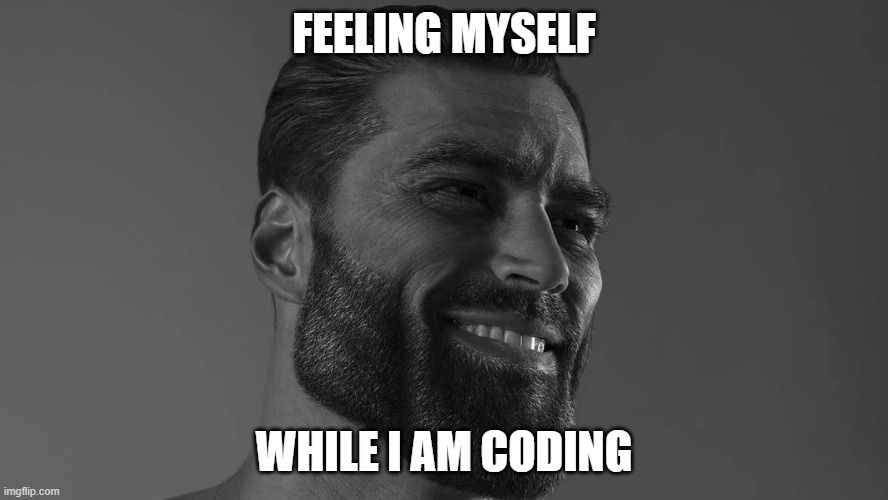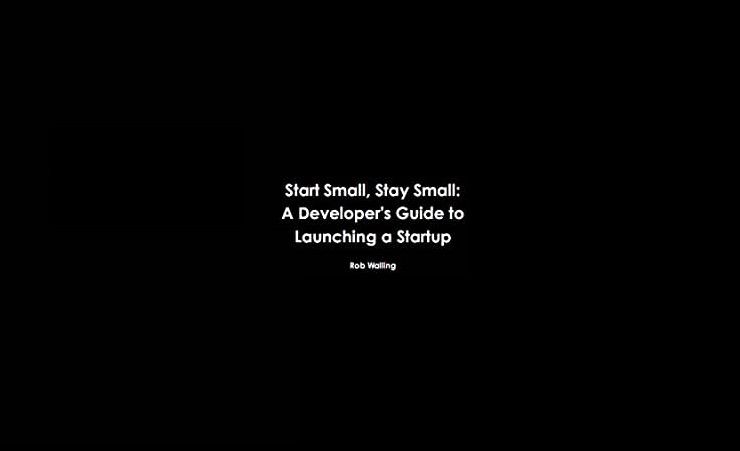Rob Walling is a serial entrepreneur, who has already built several startups. His YouTube channel delivers many good practices about how you can build SaaS businesses as a microentrepreneur. His book Start Small, Stay Small: A Developer's Guide to Launching a Startup is a decent startup guide. It is like your first week in a new job. It presents to you the different tasks you will face while you building a startup on the business side.
0. The core idea
An entrepreneur is a dreamer. A manager focuses on ROI. A technician creates the product. You need to provide each role for a business.
Most of us from the target audience of the book probably think that coding is something like this:

But the reality is the following. The user will use the program you write. A good CI/CD provides the product to the user. Marketing informs the potential user about the product. The market provides the potential user itself. Like a Hungarian folk tale (with subtitles). The conclusion is the following priority list that makes your startup successful.
- Market
- Marketing
- Aesthetic
- Functionality
1. Market validation
The idea is not the hard part. I know, each success story begins with The Idea, which is only necessary, but not sufficient. The end result is sufficient because of the people who demand and pay for it. And the hard part is that you have to implement the idea to provide something for the users they want.
If you have read the Lean Startup, then you will be familiar with the importance of untested hypothesis. If you haven't, then let me suggest the habit to collect data to accept or reject your presumption instead of just believing in them. So what you can do in Hypothesis-driven development, you have to do in making business decisions. And your very first assumption has to be that there are enough people who will pay for the implemented idea. Following the lean way, you should avoid the waste. And building a product for that nobody pays is definitely a waste.
Hey, if you want to build something just for fun, then do it. But then you can not expect people to pay for it. Because building something just for fun is just a test for the hypothesis "I will enjoy building this thing".
2. Take your time seriously
The buzzword "work-life balance" hides many things. My initial mindset always promoted my work hours in my 9-5 job as it is. I sold those hours to a company. So I was bad at finding the correct sales speech about doing anything I want in my professional life. Out of my working hours I wanted to spend time with further professional questions, but I also wanted to spend time with my girlfriend and friends. So I quit. Therefore, I get back the all 168 hours on a week. As my best friend phrases, I invest into my entrepreneurship all the money that I haven't earned since I quit.
How can you estimate your time if you are not paid after working hours? Rob's technic is the perfect solution this. Define an hourly rate that feels okay, with that you can calculate when you have to decide something is worth to do by yourself or not.

Seriously, this method represents well the initial goal of itself. You need solutions for the essential problems, but you need implementations to achieve the solutions. Is it essential to have precise conversion between your time and money? No, it isn't. Is it essential to make decisions how to do something? Yes, it is. Does it help to evaluate the situation and encourage you to choose a way how you do the next step: outsource that, implement by yourself, how you define your requirements for the next tasks? Yes it does. And that's enough, finding a precise way how you measure your time in money is a waste of time. So it's waste of money.
3. Route of the customer to buy your product
You must have a sales site. The book provides a pretty decent page architecture for it. How you can encourage the user to take actions on your site. But the main message of the book is the route of the customer to buy your product.
- People who see your URL
- Site visitors
- Prospects, who are interested in your features
- Buyers, who are convinced in that your product will help them
And no, most of the buyers are not visitors that land your site first time. You have to optimize your site for the users to come back later.
And here it comes the importance of the newsletters. Your sale site has to convince the user about that your product is worthy for her email address. (Be fair, and use the email address for the purpose you got, inform the user transparently about your product!)
Maintaining the traffic to your product is essential. The offered strategy by the book is the following.
- A mailing list: it's a marketing requirement for startups
- A blog, podcast or vlog
- Organic search
The book gives some hints about the SEO (search engine optimization) for reaching more potential customer. I think this topic is so huge and character wasting to start that in this post.
Further things that I did not mention but are in the book
The journey on that you can develop the skill of outsourcing. Practical advices about how to find and work with virtual assistants. What happens after you launch the startup: automatization or selling the startup? And beyond the "theory" the book contains multiple examples to prove its statements.
Do I recommend the book?
Yes. It is old, but gold (it's written in 2011). After reading it I noticed on myself I am able to define next steps to start a business somewhere. It introduced different buzzwords and topics that I should focus on. After all I am onboarded in my new job, being an entrepreneur. Now I am just the new colleague who is not productive in the first half year. :)


Member discussion: